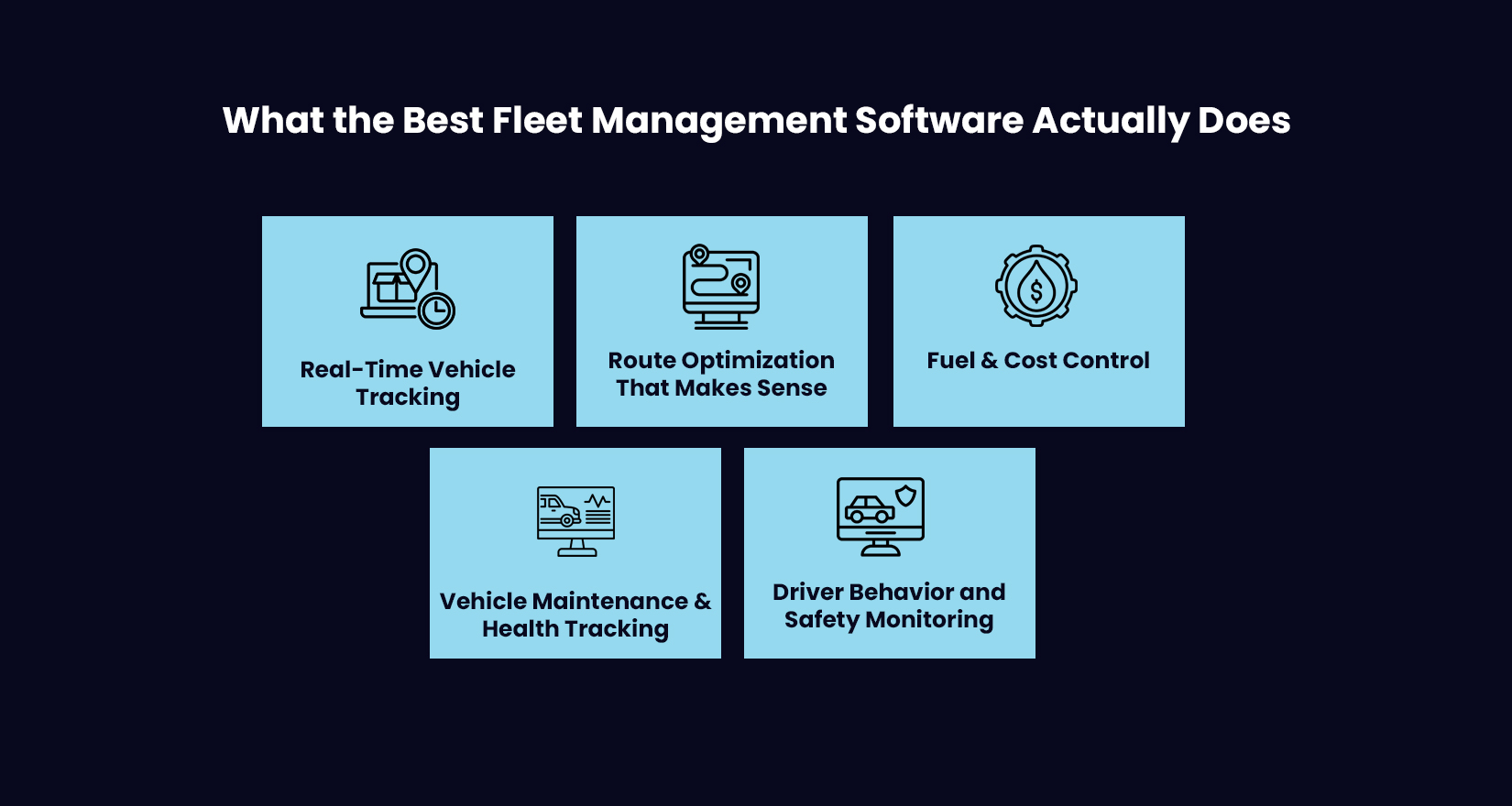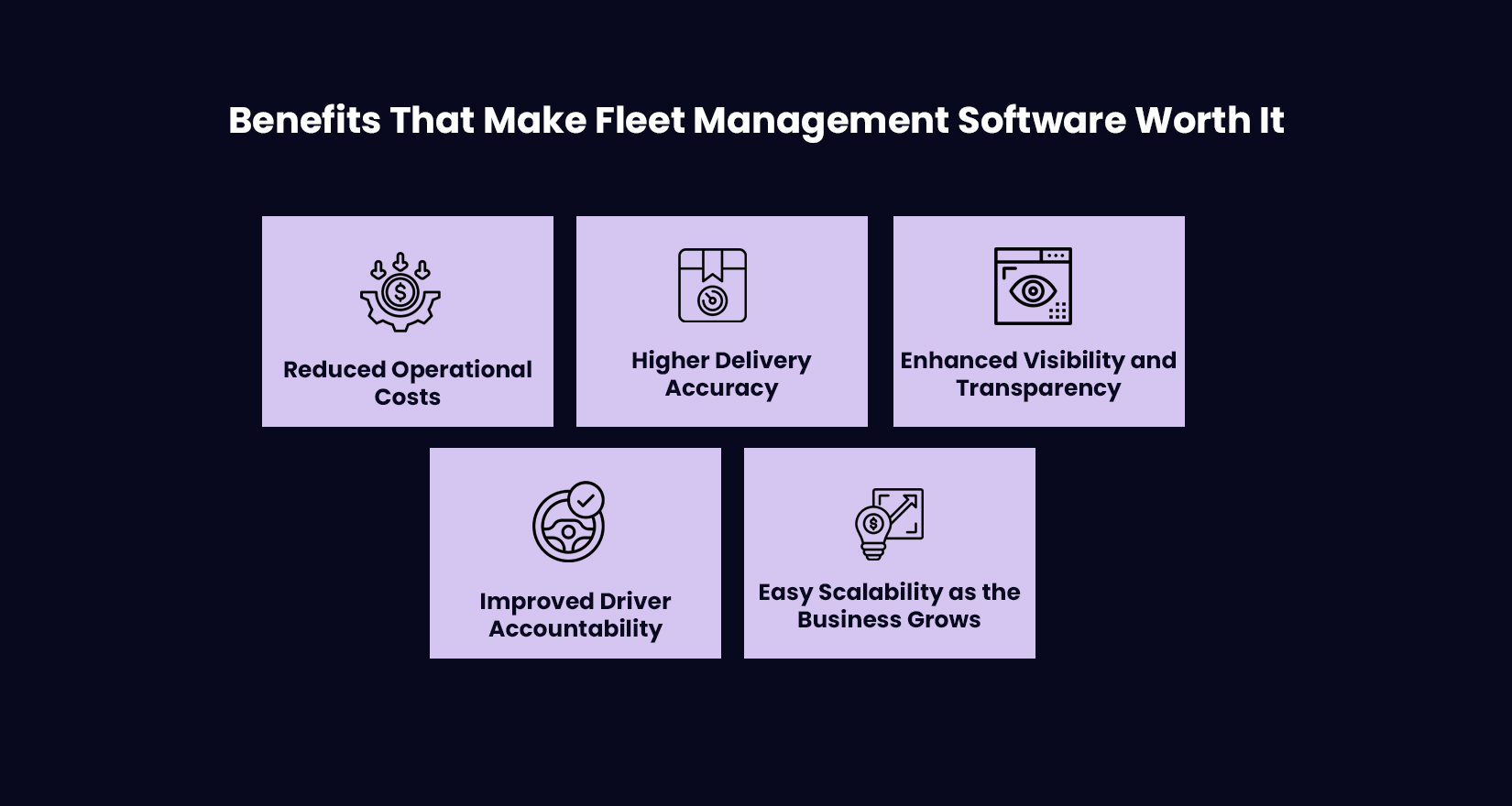
What Is Fleet Management Software? The Thing That Makes Your Delivery Game Not Mid
Today’s logistics world is fast-moving, really fast. Consumers demand same-day delivery. They want real-time updates. And they want no excuses! Coupled with unpredictable fuel costs, urban traffic seeming like a boss level no one wanted to face, and fleet operations becoming increasingly chaotic without oversight fleet management software is a worth visiting solution now. Think of it as your logistics command center. A system that tracks vehicles, monitors driver performance, optimizes routes, controls fuel spend, and gets you to make decisions that actually make sense.
In this blog we are going to breakdown what is fleet management software? How it works? Why it could be the difference between a barely keeping it together delivery operation, and one that scales with confidence.
So, What Exactly is Fleet Management Software?
Fundamentally, fleet management software is an online system for monitoring, managing, and optimizing your entire fleet of vehicles, from your cars and bicycles to your trucks and trailers. It collects real-time data feeds using the following sources: GPS, telematics, driver applications, fuel sensors, and onboard diagnostic (OBD) systems. The software will then display and organize the data into dashboards, alerts, reports, and planning suggestions. This will help to maximize efficiency and minimize manual work.
You could think of this tool quite literally as the backbone of logistics and supply chain operations today. If your fleet were a living organism, this software would be its nervous system, establishing awareness, coordination, and rapid decision-making looping.
Why Fleet Management Matters (More Than Ever)
Consumer expectations have changed. Fast and accurate delivery isn’t a differentiator anymore—it is now an expectation. Customers are expecting speed, visibility, and consistency and are not willing to accept excuses patiently any longer.
– 73% of customers believe late deliveries hurt brand loyalty.
– 94% of customers expect transparency in tracking and the ability to see delivery in real-time.
– Fuel costs are up to 60% of total fleet operating expenses.
To ignore fleet optimization now means you are accepting customer dissatisfaction, losing market share to competitors who will modernize logistics operations, and leaving money on the table.
What the Best Fleet Management Software Actually Does

1. Real-Time Vehicle Tracking:
Having 24/7 visibility of every vehicle eliminates the confusion and constant follow-ups. Dispatchers are able to respond more quickly and accurately communicate ETAs, and customers receive timely updates. All of which is critical to delivery fleet management solution’s foundation of trust, which is created by timely deliveries.
2. Route Optimization That Makes Sense:
Cities are unpredictable. The software identifies routes based upon both traffic conditions and delivery windows so the driver will always have the most efficient route to take. As a result, wasteful delays are minimized, fuel use decreases, and drivers remain productive.
3. Fuel & Cost Control:
Fuel is expensive, and waste can add up quick. The system identifies idle time, excessive detours, and inefficient driving styles, allowing fleets to cut down fuel costs by 10-25%. Decisions about operations shift from guesses to action based upon data.
4. Vehicle Maintenance & Health Tracking:
Service interruptions back up schedules and undermine customer confidence. Predictive service notifications allow you to address minor issues before they become major problems. This becomes even more important with enterprise fleet management software, since downtime is accentuated when many deliveries have to be postponed.
5. Driver Behavior and Safety Monitoring:
Driver habits impact driver safety and total operating costs. Tracking acceleration, braking, speed, and fatigue can help reinforce safer driving. The end result: fewer accidents, lower insurance liability, and a more trustworthy fleet.
Benefits That Make Fleet Management Software Worth It

1. Reduced Operational Costs:
Businesses can achieve substantial decreased operating expenses on a daily basis by optimizing routes, managing fuel consumption, and identifying unnecessary travel. Instead of theoretical efficiency, it becomes tangible and you’re able to measure it.
2. Higher Delivery Accuracy:
More accurate tracking together with intelligent dispatching allows delivery modes to reach their destinations often and on time. This creates trust in the customer and fulfills service-level commitments to avoid late dispatch.
3. Enhanced Visibility and Transparency:
Managers get visibility into every vehicle and trip in real time. Customers and employees remain informed, without needing to call, chase, and guess. Information communicates smoothly and organically.
4. Improved Driver Accountability:
Monitoring behavior fosters safer and more responsible driving. Teams will understand performance feedback and have to monitor less accidents, less claims, and professional road behavior.
5. Easy Scalability as the Business Grows:
Whether it is five vehicles or five thousand vehicles, fleet management software models will keep pace with your operation. As you expand your delivery networks, your software model will adapt to new regions or routes, or fleet modes, effortlessly.
Use Cases: Who Needs Fleet Management Software?
1. Courier & Parcel Delivery Providers:
Courier and parcel delivery companies have delivery fleets and utilize delivery fleet management software. Such as, a regional courier company, fulfilling 3,000+ daily deliveries across urban and suburban cities, that requires the need to know ETAs and minimize delivery fails.
2. Retail & eCommerce Brands:
Retail and eCommerce manage home delivery, for example, a grocery chain that needs to fulfill same day orders, where optimized routing would minimize fuel usage whilst meeting tight delivery timeframes.
3. Manufacturers & Distributors:
Manufacturers and distributors of goods being transported between hubs, for example, within the FMCG channel. A company that manages 200 intercity truck movements per day and ensures timeliness of scheduling, inventory accuracy and efficient network planning.
4. Logistics & 3PL Companies:
Logistics & 3PL companies scaling across regions or, generally as an example, as a provider in 10+ states, there must be consistent service quality and some centralized visibility across all partners.
5. Large-Scale Enterprise Fleets:
Enterprise level Operators that require centralized oversight through enterprise fleet management software. For example a nation-wide distributor that manages a fleet of 5,000 vehicles that requires one version of the truth for fleet compliance, safety, and performance.
Regardless of whether you are managing 5 vehicles or 5,000, we all want to remain effective and competitive, and manual oversight can no longer keep pace.
The Future of Fleet Management: AI, Automation & Predictive Intelligence
Fleet management is undergoing tremendous change. In addition to what has already been brought to bear on fleet management, there are near term trends that will shape fleet use. These include:
– Self-optimizing routing systems that will change in real time without human intervention.
– Predictive maintenance powered by sensor analytics that detect issues long before a breakdown occurs.
– Automated dispatch and resource allocations that substantially limit manual decision-making and scheduling effort.
– Sustainability reporting (i.e., carbon footprint, fuel emissions, EV feasibility) helping us conduct a greener and more cost-efficient manner.
We’re already moving into a reality where your fleet tells you what needs attention before issues even arise. And yes, it’s going to be as game-changing as it sounds.
Conclusion
Your deliveries should not feel like a ‘normal’ incremental delivery experience, relying on luck or last-minute coordination. The right fleet management software creates structure and visibility in your operations and improves efficiency. You transition from a firefighting operation to a data-driven organization. Your costs decrease, your delivery times tighten, and the trust you begin to develop with customers feels like a natural outcome and not a daily fight.
If your plans are to reduce operating costs, deliver faster, create a better customer experience. Along wit these to scale your logistics business with confidence, you should get a modern fleet management solution. The greatest risk in freight and logistics today is to stay “mid.” Sign up for a demo today with LogiNext and explore how your fleet can operate at the next level.
2







@LogiNext